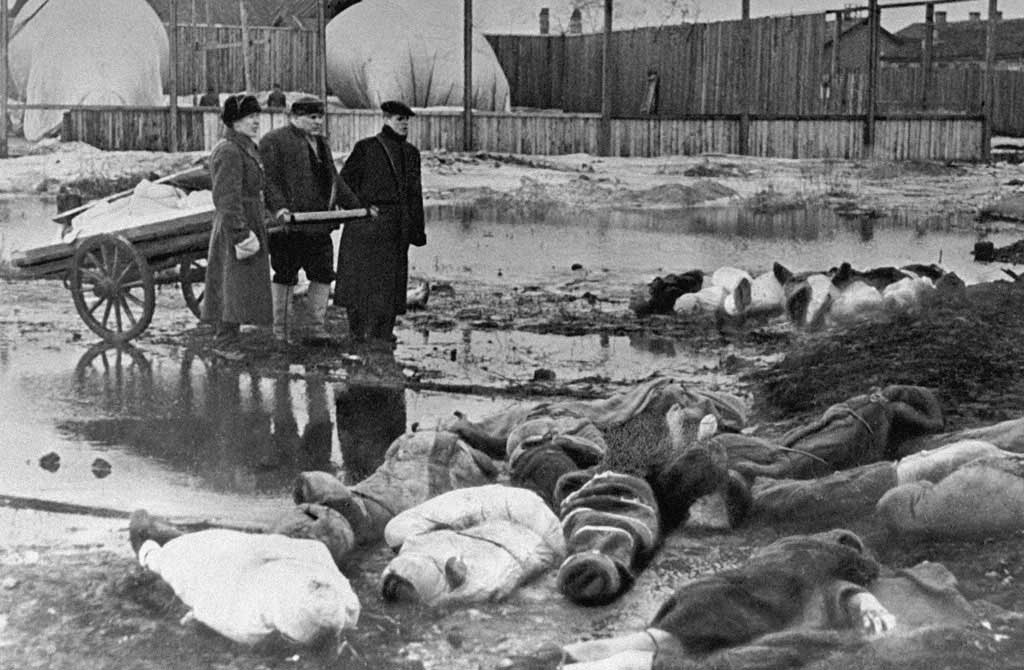Sept 1941-Jan 1944
Hitler’s plan in World War II was to break down the strategically important Leningrad by blockade. During the 900 days of siege, despite hunger, cold and disease the citizens of Leningrad never surrendered to the Nazis.

Three Men Burying Victims of Leningrad’s Siege. The Volkovo Cemetary, 1 Oct 1942. Photo by Boris Kudoyarov
Background
When Hitler’s Germany attacked Russia on 22 June 1941, the plan was to completely surround Leningrad with the help of Marshal Mannerheim of Finland. The plan was fulfilled by September 1941.
Blockade
The population of Leningrad was 3 million, including 400,000 children. The former capital had only a few months’ reserve of food and fuel. By the winter of 1942 there was no heating, no water supply, almost no electricity and very little food.
In winter 1942 the daily bread norm was only 125 g a day. In January and February alone over 200,000 people died of hunger and cold.
The only link to the outer world was Lake Ladoga, nicknamed “Road of Life”. Under constant bombardment of the Nazis, goods were imported and sick people exported through the road of ice in winter and the waters of lake in summer.
Results
Over 670,000 people died and some even estimate it up to 800,000. The city never surrendered, and it was said: “Troy fell and Rome fell but Leningrad never did!”.
Siege of Leningrad
Sept 1941-Jan 1944
Hitler’s plan in World War II was to break down the strategically important Leningrad by blockade. During the 900 days of siege, despite hunger, cold and disease the citizens of Leningrad never surrendered to the Nazis.
Three Men Burying Victims of Leningrad’s Siege. The Volkovo Cemetary, 1 Oct 1942. Photo by Boris Kudoyarov
Background
When Hitler’s Germany attacked Russia on 22 June 1941, the plan was to completely surround Leningrad with the help of Marshal Mannerheim of Finland. The plan was fulfilled by September 1941.
Blockade
The population of Leningrad was 3 million, including 400,000 children. The former capital had only a few months’ reserve of food and fuel. By the winter of 1942 there was no heating, no water supply, almost no electricity and very little food.
In winter 1942 the daily bread norm was only 125 g a day. In January and February alone over 200,000 people died of hunger and cold.
The only link to the outer world was Lake Ladoga, nicknamed “Road of Life”. Under constant bombardment of the Nazis, goods were imported and sick people exported through the road of ice in winter and the waters of lake in summer.
Results
Over 670,000 people died and some even estimate it up to 800,000. The city never surrendered, and it was said: “Troy fell and Rome fell but Leningrad never did!”.
Cold War